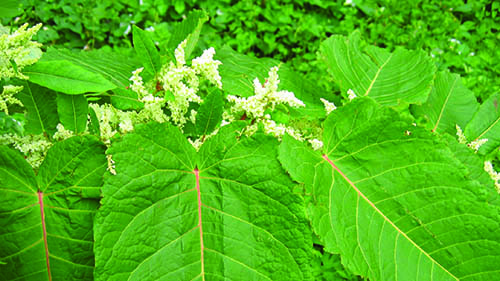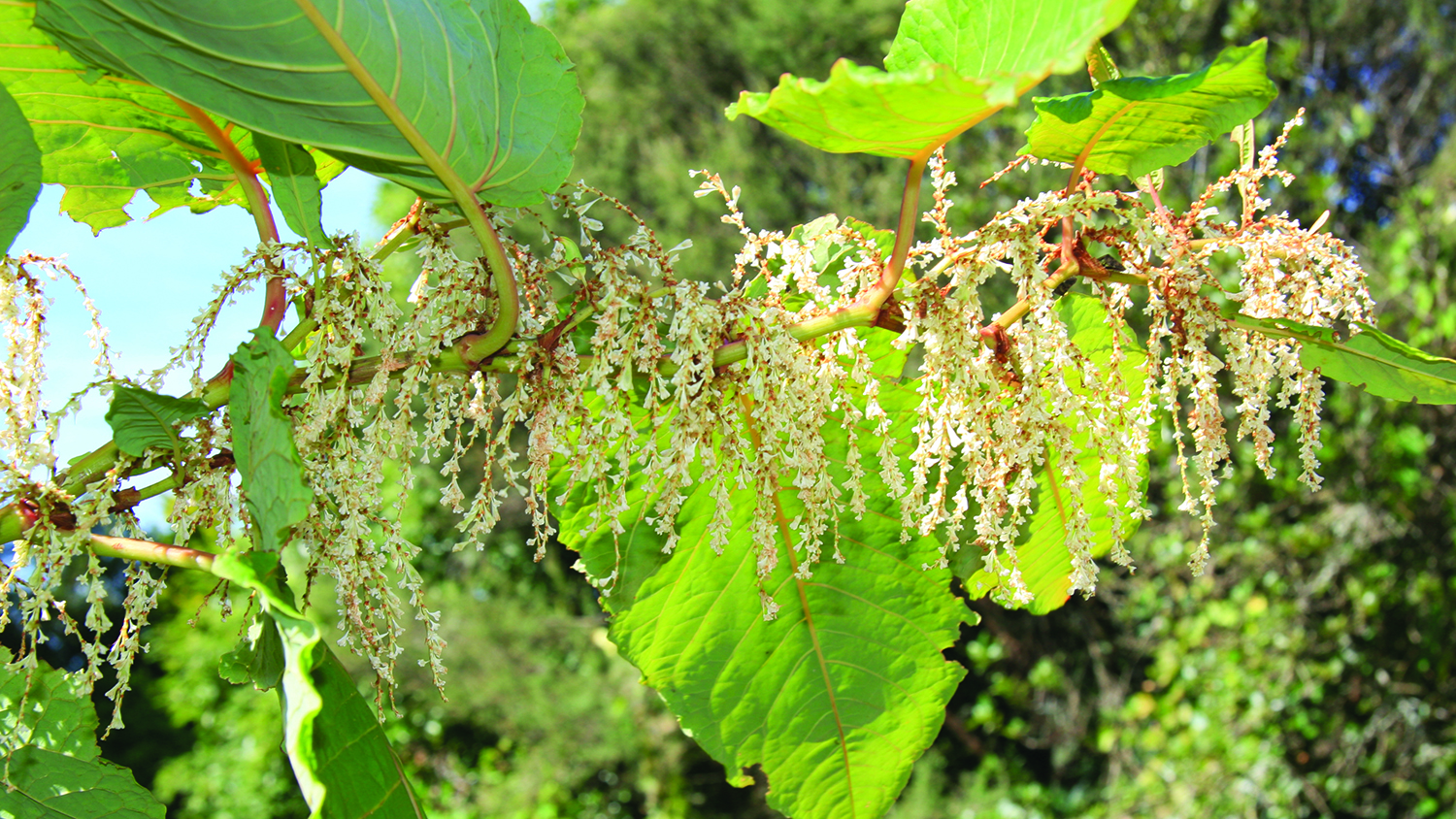| Management programme |
| Eradication |
| Objectives |
| Reduce the level of infestation of giant knotweed and Japanese/Asiatic knotweed within the Waikato region to zero density to prevent adverse effects and impacts. |
| Impacts |
| Economic, biodiversity, water quantity/quality, amenity/recreation |
Japanese and giant knotweed are originally from Japan and were introduced to New Zealand as ornamental plants. They’re considered a serious invasive pest plant in parts of Europe, and we want to prevent them from spreading in our region.

What does it look like?
Deep rooted, woody perennials that can grow up to 4m high.
Flowers
- Produce masses of creamy white flowers.
- Flowers produced in erect branched flower heads (panicles) to 6cm long.
- Flowers: December to March (Japanese knotweed), November to April (giant knotweed).
Fruit/seeds
- Japanese knotweed: Fruit is a nut (about 3mm long) that is glossy brown, bluntly/angled.
- Giant knotweed doesn’t produce seed in New Zealand.
Leaves/stems
- Japanese knotweed:
- Long triangular leaves with pointed tips, up to 15cm long.
- Leaves have <14 pairs of lateral veins.
- Leaf stalk is dark crimson.
- Has zigzagging stems (canes), raised at the nodes, that are hairless and reddish-purple when young. When mature they are hollow with purple speckles.
- Plants are deciduous, and the stems die back to the root base in winter. Old canes can take up to three years to decompose.
- Giant knotweed:
- Long narrow, heart-shaped deep or bright green leaves up to 30cm long.
- Leaves have >14 pairs of lateral veins.
- Leaves smooth on top but sometimes covered in fine hairs underneath.
- Leaf stalk is reddish.
- Stems are thick, hollow, often green to reddish-brown.
- Plants are deciduous, dying back to the root base in winter.
Why is it a pest?
Japanese/Asiatic and giant knotweed spread very quickly and invasively in new sites to form monocultural stands that exclude desirable species and prevent native seedlings from establishing. Their dense root (rhizome) systems can reach up to 3 metres deep, extending up to 7 metres from the parent plant. The roots produce chemicals that can also prevent the germination and growth of desirable plants.
Knotweeds can spread via their long-lived seeds (Japanese knotweed), and vegetatively from even small fragments of stem or root (for example, during floods and on drain cleaning machinery), enabling them to quickly establish in new areas. They usually grow in disturbed sites, urban areas, roadsides and along river margins. Knotweeds are very hardy and tolerate a wide range of soil conditions, temperatures, drought and salinity, however they don’t thrive in shade. Once established they are difficult to eradicate.
Knotweeds have the potential to narrow waterway channels, impeding water flow leading to siltation. They also impact on the recreational values of those waterways by obstructing access. Their tough shoots and roots can break through hard structures like gravel, tarmac and concrete causing damage to foundations, paving and roads, and flood prevention structures.
Knotweed occurs at sites in Taupiri, Karangahake (south Coromandel), and in Hamilton and Tamahere.
Control methods
Waikato Regional Council is responsible for controlling knotweed and it is illegal for anyone else to remove or disturb it.
If you see knotweed on your property, do not cut, treat or try to remove it. Call 0800 800 401 to report it to your local biosecurity pest plant officer.
Help to stop the spread
WARNING! Even tiny fragments of knotweed can form new plants.
Knotweeds can be spread by soil movement, in garden waste, contaminated soil and on equipment like diggers and farm machinery. When disturbed, knotweeds break up easily into small fragments each of which can easily regrow. Take special care not to disturb it or move it to new sites.
More information
Advice
- For additional information and advice on knotweed, call our pest plant staff on freephone 0800 800 401.
Publications
- The following publications are available for download or from Waikato Regional Council. Contact us to request a copy (freephone 0800 800 401).






